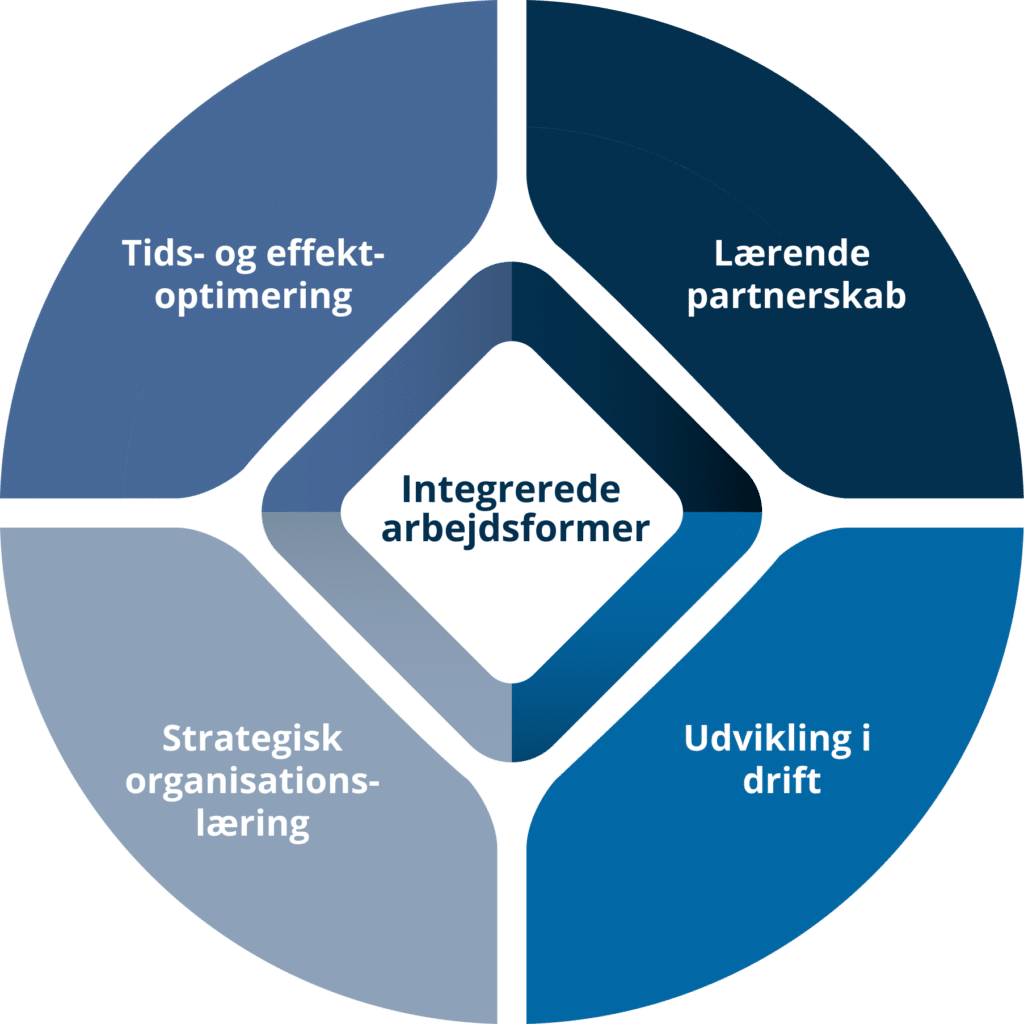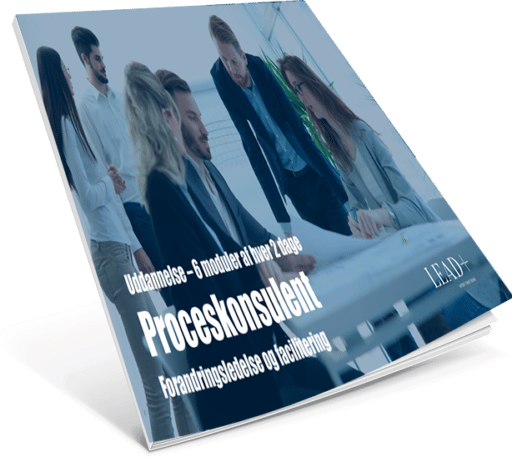It's a given that an organization must evolve and change to keep up with the times and the market it belongs to. Successful change and development projects require a lot from both management and employees, which is why change management is so important for an organization. But what is change management and what can best help you and your organization through change and development processes? We address this below.
Change management's biggest challenge: Resistance
Do you work with change management, change processes, development processes - or with organizational development in general?
If so, you have probably, at some point, experienced resistance to change. You may also recognize either increasing time and resource pressures, increased speed or a general process fatigue in your organization. These are the conditions that were repeatedly highlighted when we interviewed 100 development consultants, HR managers and others to find out what characterizes successful change today.
The challenge is legitimate, human and understandable: When we're asked to change, to change habits and workflows, most of us feel uneasy. Some adapt quickly and find meaning in the change. Others need more time and may not see the point of the change or are unsure if they can live up to the new demands that come with the change. It's important to remember that resistance is not necessarily negative. It's also a sign of high ambition and commitment on the part of the employee.
It is therefore rarely easy to succeed with change and achieve impact and concrete results with all the good development projects you as an organization and management want to implement.
Read below for an introduction to five factors that are crucial to your success in creating change.
TIP! Read also about the three pitfalls to navigate around if you want to succeed with organizational change.
What is good change management? Different approaches to change
As a manager and/or process consultant, your role is to understand and manage resistance in the best possible way so that employees are heard and you can implement the change in the best possible way.
Over the past few years, there has been a significant shift in the demands on the way development consultants work and methods, which challenges the consulting field of practice enormously.
The field is generally dominated by two main competing directions:
The expert approach, where consultants drive development and change processes based on a perception of knowledge as an objective truth. It addresses the organization's structure, governance and processes.
The process consultation approachwhere work is done by letting the organization members develop their own solutions. The key elements are relationships, training, skills, process quality, process optimization and meaning-making.
Neither of the two directions is overall successful in supporting change that achieves the organizations' goals. Several pieces of empirical research show this (Kotter, 1996; Beer & Nohria, 2000; Elmholdt, Keller & Tanggaard, 2015; Conrad, 2015). Therefore, we have developed a model that represents a new direction and approach to working with organizational change.
TIP! You can also read more about change processes in organizations in this article.
Article continues after the image
Want to be even better equipped to manage processes?
LEAD's research-based process consultant training gives you the methods to design, facilitate and lead strategic development processes and changes to create the impact you need.
This is an education for those who work with development, processes and change management.
Read more about the process consultant training here
Use the five-factor model in change management and change communication
The five-factor model was developed based on input from 100 practice experts, along with research on successful implementation, change management, process consultation and organizational learning. You can read more about this in a longer article about the five-factor model, here.
Here's a brief introduction to the five factors that are essential for success in your role as a development consultant or "change agent".
The first factor is fundamental to understanding the organization, change and the role of the development consultant. The remaining four factors are more limited and practical in terms of how development initiatives are designed and executed.
Factor 1: Integrated ways of working
The integrative thinking about the organization, change and the role of the development consultant presents you with a double challenge.
Firstly, you must be able to understand and work partly based on the process consultant's methods to involve, create meaning and common goals, strengthen relationships and develop competencies, and partly based on the expert consultant's methods to apply analytical models and evidence-based knowledge and develop by changing the organization's structure and governance.
Secondly, you need to be able to design change that integrates an ongoing top-down framework with bottom-up involvement of stakeholders at all levels.
In practice, integrated working methods will often involve putting together a team that can bridge the gap between the two approaches to create a holistic development process. Your key competence here is to orchestrate the team's work and ensure that the necessary knowledge and skills are brought into play at the right time.

Factor 2: Learning partnership
Learning partnership is a fundamental way of working between the organization's key players and external as well as internal development consultants. Here, development must take place in a close, mobilizing, competence- and capacity-building collaboration between the relevant stakeholders. Learning partnership will therefore in practice be of great importance in development projects in terms of who you involve and how.
You will take on the role of master teacher and build the internal key players to drive the agreed learning and improvements.
You will also facilitate and project manage with a focus on supporting organization members in building new habits and embedding them in new processes, tools and in the ongoing management and rewarding of them.
Factor 3: Development in operations
Development in operations implies a break with the traditional distinction between development and operations as two different areas of focus. Instead, development must be an integral part of operations and task solving, and a large part of the development activities must be carried out as an integrated part of daily life, while the participants do their work as much as possible.
This means that as a consultant, you will largely become a participant and developer of daily practice.
Concrete approaches such as learning meetings, shadow coaching, live feedback, peer-to-peer training, mastery learning, mentoring, cross-disciplinary project groups, observation and feedback in whiteboard meetings and other forms of micro-interventions often win out over retreats or classrooms.
Article continues after the image
The art of implementation
We offer management and organizational sparring, research-based training and presentations on implementation as well as training courses with a specific focus on giving you and your organization general implementation skills. Read examples of our services here.
Factor 4: Strategic organizational learning
Strategic organizational learning implies that the development project is designed into a committed, strategically targeted and top management-supported organizational framework, and that the project works with "the influenced and influencers" from an organizational perspective.
In concrete and practical terms, this means that the development project is designed so that it:
- Is framed and sponsored by senior management
- Is linked to strategic initiatives and goals
- Is supported by changes in organizational structure and governance
- Involves the networks of actors, groups and departments that together produce what needs to be improved.
Factor 5: Time and performance optimization
In short, time and impact optimization is about your ability to balance between when to accelerate at the pace required by the change or environment, and when to slow down, be reflective and realistic, and have the courage to stand firm when necessary.
It also requires you to create impact documentation through qualitative and quantitative data from start to finish of the intervention. We're not talking about large, classic final evaluations that take up several binders, but rather broad-spectrum microdata. This can include participants continuously tracking their progress on an app or mini-surveys.
Measurement in itself can strengthen learning and development, and at the same time, measurement legitimizes and promotes the project and its stakeholders. Both are crucial to ensure the necessary support.

Do you want to get better at:
- Clarify the organization's real issues
- Create a design that matches the unique problem
- Read a room and facilitate effectively
- Communicate the right messages that create engagement and followership
- Be more confident in your role as a process manager
- Integrate top-down and bottom-up processes
- Design and implement engaging and varied ways of working
- Increase speed by using behavioral design
- Develop and implement in an agile way - adapting as the situation changes.
Fill out the form below and receive our description of the research-based process consultant training that gives you the most powerful tools for process management in practice.




